| |
'In a retrospective interview on the DVD edition of The China Syndrome, she notes with satisfaction that the film helped persuade at least two other men – the father of her then-husband, Tom Hayden, and her future husband, Ted Turner – to turn anti-nuke. "I was ecstatic that it was extremely commercially successful," she said. "You know the expression 'We had legs'? We became a caterpillar after Three Mile Island.' |
| |
The Jane Fonda Effect, New York Times, September 16th, 2007* |
Forgive my repetition. Money, as you know if you think about it logically, is a globally shared delusion. We all (ahem) 'buy' into the idea that binary bank balances, notes and coins have real world value. In one of the universe's astonishing coincidences, two days after I wrote the above, I read the exact same idea floated by a character in David Lagercrantz's second Lisabeth Salander novel The Girl Who Takes An Eye For An Eye. Despite the original author, Stieg Larsson, inconveniently dying before the publication of his wildly popular trilogy starting with The Girl With The Dragon Tattoo, commerce must march on but that said, Lagercrantz does a great job in continuing Salander's story. So, let's imagine a scenario. A group of people (an energy company) is so enamoured of making money, saving it and distributing it - God forbid they lose any of it – that it shares a collective delusion that nothing is or could ever be quite as important. The nothing in this instance is all human life in Southern California. Human life, in the ring against human greed, is as glass jawed as it can possibly be and greed punches way over its weight. Lead actress Jane Fonda in one of the 1999 shot extra features on this disc insists that The China Syndrome is essentially about greed. She's right but the nuclear industry had some justifiable grounds for complaint. The harried workers in the movie defend their business in short, throwaway lines throughout the film itself but nuclear is a really convenient 'bad guy' simply because of what truly dire consequences could occur if something does go wrong. Let's gloss over the radioactive waste problem. Chernobyl used to be an anonymous Russian controlled Ukrainian metropolis. Now, it's the poster-city for anti-nuclear protesters, a concreted mausoleum surrounded by a nature-overrun area inhabited by a few hardy human souls. Officially, it's stated that the affected zone won't be safe for human habitation for 20,000 years... Yes, you read that right and I'm not even sure if Wikipedia has that wrong. Nuclear power and its risks as a justifiable target are guaranteed to get audiences to hiss and boo. Never let the industry's safety record over the past seventy years or the facts get in the way of a good Daily Mail (spits on the floor) scare story. In fact, if you want the truth on how human error has led to some near disasters read Command and Control by Eric Schlosser. There are a few eye openers in there.
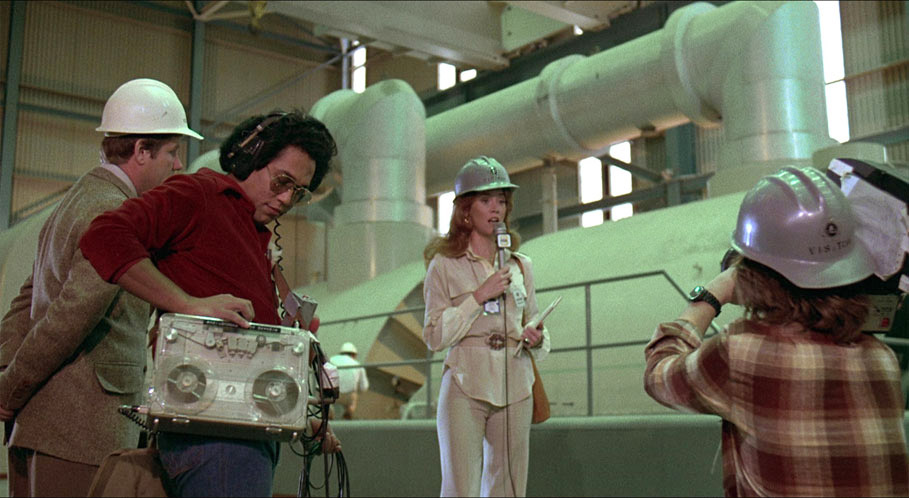
Kimberly Wells (Jane Fonda) is an attractive, soft news presenter, hired for her looks. She's anxious to break out of the safe bubble she has found herself trapped in. The stories she covers, and the scripts written to cover them, are in the worst case painfully embarrassing and in the best, light pap as filler. I remember cringing at some of the shit she has to cover and as that is probably the point, it's a point almost too well made. On the side, to boost her journalistic credibility, she's shooting an energy special for her network and with her friend and freelance cameraman Richard (Michael Douglas) and sound recordist Hector (Daniel Valdez), she does a few pieces to camera at the Ventana Nuclear Power Plant. While touring the site, there is a frightening incident that Richard captures on film despite him being denied permission to shoot the control room. The network refuses to air the edited piece despite the exclusive scoop it clearly is and Kimberly has to chase her cameraman all over the country to retrieve the film he's stolen from the network. Meanwhile, plant supervisor Jack Godell (Jack Lemmon) is convinced the plant isn't safe and after finding evidence of company wrongdoing, he desperately tries to do the right thing.
It's a really old dilemma; corporate greed versus human safety. Everyone wants things to be OK so the minimum evidence convinces those with profit on their minds to carry on as normal. The working folks, mindful of the importance of holding on to their jobs, accept the situation. One man knows how dangerous this course of action could be and is prepared to risk everything to inform the public. This is the very definition of selfless behaviour. Lemmon is superb as Jack Godell, every worry lined in his face, every fear, naked in his eyes. Lemmon has always played sympathetic characters, roles that demanded he radiated (see what I did there?) humility and vulnerability. Well, in this film he's electric and has the audience behind him from the first scene in which we see him. He's been a company man through and through and as far as we are made aware, he is a man alone (not necessarily a lonely man) living a quiet life. Once Fonda arrives at the local watering hole looking for her cameraman, she encounters Lemmon who makes a subtle but nonetheless real pass at her. It is a lovely man-woman character scene in a film not brimming with such quiet moments.
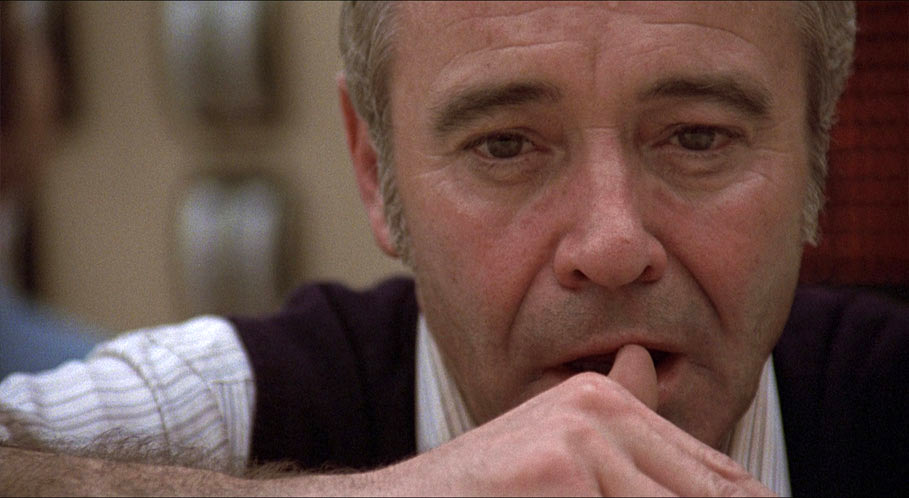
Lemmon is in good, solid company. Director James Bridges has his hand firmly on the thriller tiller but his primary gift is his skill with actors. Though not exactly stretched, Fonda is a thoroughly believable attractive TV personality while Michael Douglas plays cameraman Richard very much how I imagine Michael Douglas would actually be. He's mischievous, angry, righteous and determined to get at the truth behind the accident he witnessed. The cast is peppered with memorable supporting players. A favourite of mine, Wilfred Brimley, he of the giant moustache and sticky fingers in the climax of John Carpenter's The Thing, has a subtle arc. He has to go from friend and relieved colleague to fear of being scapegoated to company man dismissive of his once paranoid friend and then back to realising that his friend was right. The company roles casting is absolutely spot on and each one of the three main actors representing the company is eminently hissable; there's PR man Bill (James Hampton) the softer edge of the company, bland and all surface; plant manager Herman (Scott Brady) whose common sense pragmatism doesn't support his apparent loyalty and lastly, there's the fat cat spider at the centre of the web, Evan McCormack played with real menace by Richard Herd. No personal criticism intended but some actors really do look the part. McCormack's line "Scram the son of a bitch," resonates for its malice and its errant stupidity. I know the alternative version of the line would not have been "Blow up half of Southern California!" but that's what he was ordering.
There are other notable aspects to the production. There is a low-level helicopter front credit shot that is stunning to witness. As the credits appear, we are treated to a slow zoom into Douglas's car as it travels. Whoever is operating the camera deserves a raise. She/he manages to get close enough to recognise both Fonda and Douglas. For its time and without digital technology, this is a triumph of a practical shot and deserves to be applauded. Loudly. Early in the film Bill, the friendly face of the nuclear power plant, gives the small film crew a guided tour. He gives a short explanation of the workings of the nuclear process and oddly pronounces 'turbine' as 'turban'. A little while later, Kimberly pronounces it, to my ears, correctly and then minutes later Jack responding to the turbine trip, pronounces it 'turban' again. Maybe it's a nuclear industry jargon thing but it pulled me up short. Twenty minutes later Jack has obviously changed his mind and says 'turbine' again correctly. It reminded me of Star Trek's Dr. McCoy, DeForest Kelley's mispronunciation of the alien name 'Balok'. The alien introduces himself as 'Bay-lock' and McCoy later says to his Captain, "Baa-lock's message was heard all over the ship." From then on, Star Trek scripts came with pronunciation guides. Joe is McCormack's right hand man. I cannot find his credit online. He may be actor Joe Lowry (credited as 'Security Agent'). He says nothing but has a demeanour and body language that deserve their own hall of fame. When asked to keep an eye on Michael Douglas, he stands there, hand over hand with an expression that is wildly and comically 'hard'. The next time we see him is in serious-comedy mode with a walkie-talkie bent up to his ear. He doesn't actually move but his expression is priceless. In fact on subsequent viewings, I laugh whenever he floats into view, standing stock still with his rabbit-in-the-headlights look. It seems that the director James Bridges never got around to monitor the actor's performance as he upstages anyone else in the frame with him. I also have to mention, 'The World's Most Ineffectual Security Guard' whose armed presence in the control room is there only to provide Lemmon with a gun when he needs it. It seems as if Bridges cast an actor who could barely lift a gun much less fire it. Apologies to actor Martin Fiscoe.
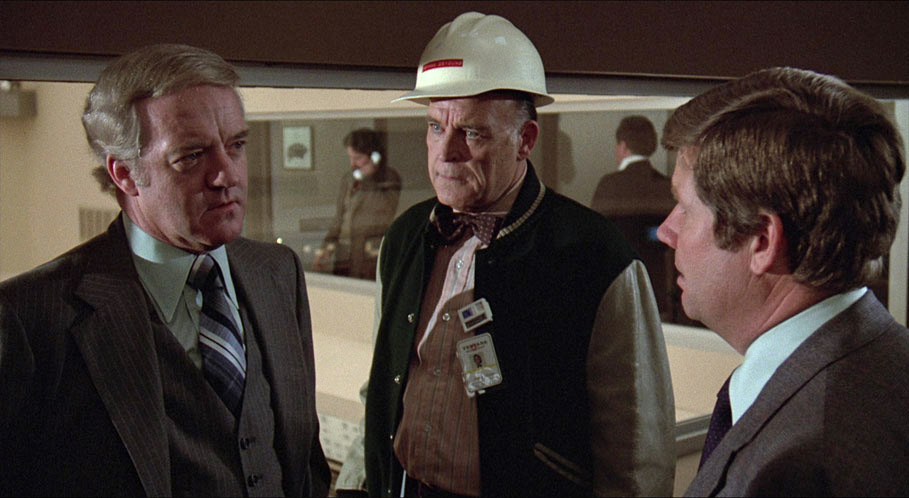
The editing by David Rawlins is extraordinarily effective. He almost clips shots too short to make a point. Try the lack of space between Fonda taking a drag on a cigarette, saying "I don't smoke!" to the shot of Douglas's car arriving. It feels clipped but it's just perfect. As the teleprinter records the end of the 'event' at the power station, printer paper heading north, he cuts on a similar movement of a crash barrier going up thereby internally linking the shots that are subject-wise as far apart as two shots could be. It's economical and it thrusts the narrative forward. He uses sympathetic movement to propel his cuts and it works really well. When the sound from the scene to come precedes the cut to that scene it smooths the transition and melds the scenes together in a way otherwise impossible to achieve. This kind of transition is known as a J-cut. I've been in this business for 35 years and I had to look up the technical term. Editors achieve by instinct what it's impossible to teach. My favourite transition occurs after the film's most shocking line (you'll know it when you hear it). There's not a single frame left between the end of the line and a shot of the interior of the plant (a terrific miniature by Star Wars alumni, Richard Edlund). A creative decision in post-production led to one of The China Syndrome's greatest strengths. I saw the film on its original release and have watched it several times over the decades. What always impresses me is how the sound effects of the control centre, the whirring, buzzing alarms and teleprinter print outs are so latched on to my memory of seeing the film. Treasonous for such a film score aficionado as myself to say but a score would have been disastrous for the drama. The sound effects do all the work and they do it superbly well. There is a mildly inappropriate song accompanying the opening credits but musically, that's it. Even the end credits scroll silently. A superb decision. As learned from the booklet, some of composer Michael Small's work exists as diegetic music over the TV scenes and the pool party scene but apart from that, no score.
Fonda's final scene after hearing Bill lie his ass off about Godell's mental and sober fitness... This is where fake news was born. This is the sort of spin that makes me boil with anger. And yes, with Trump and Brexit, you'd think I'd be boiled out. There's plenty more indignation where that came from. Finally, two things I noticed after my multiple viewings. Kimberly drives a 1978 yellow VW Golf, the exact same model and colour as my own first car. More importantly in review terms, I was shocked to find out the running time. This film feels like a slick, no-scene-redundant thriller that barrels along at a brisk 90 minutes... Its actual running time is three minutes over two hours. And that's with a 70's end credit roll, not the 12 minute textual tsunami we have at the end of films these days. I would never have guessed this. You want a great thriller with all boxes ticked, then this is your disc.
The 1.85:1 picture looks pristine with the natural softening that real film exhibits. The colour is naturalistic (I understand Fonda's red hair on TV monitors on film caused a few headaches) and the contrast is pleasing. Some of the matte paintings are less effective as they were 40 years ago but the miniature work (inside the plant) still holds up remarkably well. There is a choice of the original mono soundtrack or a remixed 5.1 surround sound track.
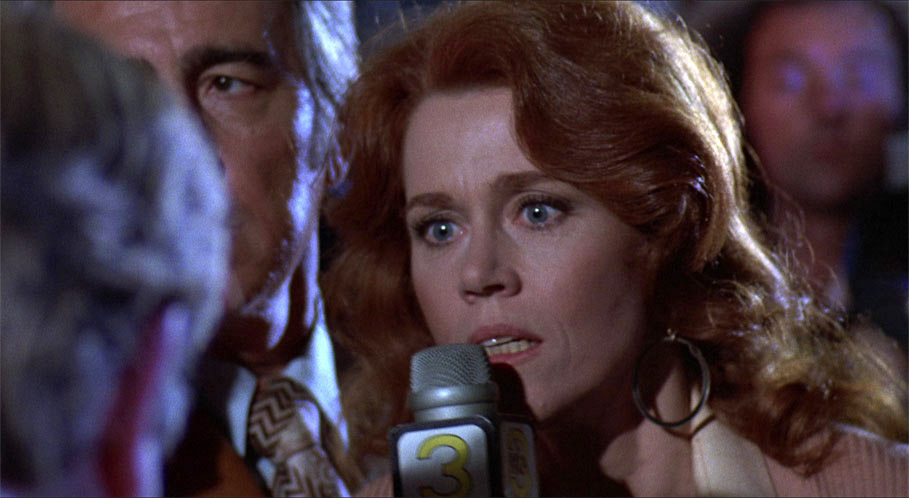
The 5.1 doesn't trouble the sub or the rears too many times. This is a bit of a shame given how much more 'oomph' the vibration of the 'event' might have given the audience.
There are new and improved English subtitles for the deaf and hard-of-hearing
John Player Interview with Jack Lemmon conducted by Philip Oakes at the National Film Theatre (1973) (1hr 19' 20")
This is an autobiographical romp through Lemmon's career. The actor comes across as sincere and earnest. His stories of his early days on stage are entertaining. He talks about his surreal introduction to Columbia big shot Harry Cohn (aka White Fang because of his fierce way of dealing with actors). Mr. Cohn respected Lemmon for stubbornly refusing to change his name, his Harvard education and treating Cohn like a human being not a monster mogul. We find out why Some Like It Hot was shot in black and white despite Marilyn Monroe's contract stating she could only be shot in Technicolor. And we also discover what Lemmon refers to as "...one of the greatest experiences of my life." He shares his opinion about comic timing (he concludes that it can't be taught and must be innate – a bit like the skill of editing). It's also interesting, and to his credit, that Lemmon ends every story with the words "...in my opinion." From 54 minutes onwards, there're a few tape speed glitches but you don't feel short-changed. "Rita Hayward came in and burped," deserves its own hash tag.
A Fusion of Talent (1999) (27' 36")
This is a documentary about the making of the film, featuring interviews with cast and crew, including Jane Fonda, actor-producer Michael Douglas, executive producer Bruce Gilbert, and actor Jack Larson, partner of director James Bridges. Replete with clips, this is a fascinating behind the scenes look at the film. It's such a surprise to find out that James Bridges used to pray to God often to give him the strength to carry on. Fonda gives us the genesis of the Marilyn Monroe poster, the turtle (see later) and the red hair (a nod to comic strip redhead reporter, Brenda Starr). Everyone adored Jack Lemmon and he must have been too infirm from his bladder cancer to take part in this doc. He died two years later in 2001. Lovely to see the wealth of ethnic diversity in the casting, something supposed to reflect multi-cultural California at the time. I was astonished to learn that Wilfred Brimley had had only three performances behind him before playing Ted. First, he was a stuntman and then uncredited in the other two movies. That says a lot about James Bridges' talent for casting. The ending would not work without Brimley's pitch perfect performance. A solid extra for fans of the movie.

Creating a Controversy (1999) (29' 35")
This is a documentary about the controversy surrounding the film and the real-life events that occurred just after its release. Michael Douglas' beard is hardly a controversy but the studio's desire to have it shaved off kick-starts this extra with some lovely background detail throughout. We are reminded of the analogue production context. It's jaw-dropping to find out that the freeway chase was shot on one single day (no digital vehicles, just stunt drivers, an unopened stretch of freeway and extraordinary planning). Bruce Gilbert, executive producer, was as shocked by the 'reality' of a character's death as he was standing next to the camera as the scene (and he) was shot. It's also fascinating that Jack Lemmon disliked the cut of the film and thought his best work had largely been left on the cutting room floor. But director James Bridges was satisfied and eventually Lemmon came around. Faced with the success of the film, how could he not?
Assessing The Fall Out –Tony Shaw on 'The China Syndrome' (17' 35")
A propaganda historian, Tony Shaw gives us his take on how film promotes ideas and how specifically The China Syndrome reveals the propagation of the 'energy media complex' in the US in the 70s. This is academia looking at the broader picture of how these massive concerns interact and back scratch. Shaw gives us some fascinating detail on the genesis of the project and illuminates the historical background touching upon the political will of Jane Fonda and how she was probably the most bankable actress at that time. It's fascinating to know but hardly surprising that Fonda's role was considerably enlarged from writer/activist Mike Gray's first drafts. He talks about the Three Mile Island disaster and how its outcome was worse than what the movie was illustrating. He also describes how people used the film with their own agendas even to the point that the Russian government used it as a way of proving that the US government was lying to its people. Pot, I'd like to introduce you to Kettle. This is a well-informed, fascinating extra.
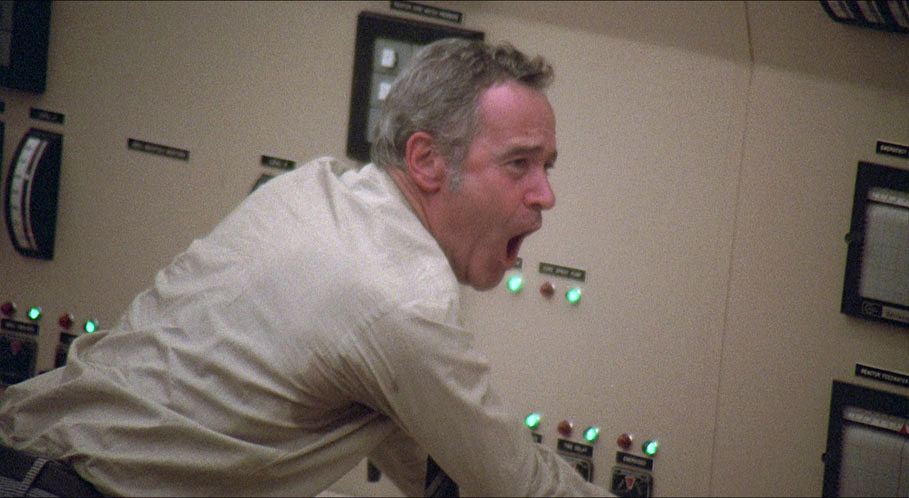
Deleted Scenes
Beautifully scruffy and dirty prints comprise this small collection. I always get a small but powerful yearning when film reminds us it's physical.
- Jack and Ted and Harmon's Bar (1' 30"): It is a shame that small, well written character pieces get cut out but when your movie is over two hours, I guess the producers get nervous. While not essential, it's a good scene though I could happily see less of 'soft' news Kimberly.
- Jack and Ted at the plant (37"): a walk through with some seriously mismatched sound. Nice but not missed.
- Kimberly Wells at the Party (1' 47"): Now this is more like it. It's Fonda's #Metoo moment with a drunken colleague at a pool side party and she gives as good as she gets. This scene by today's standards is quite shocking but in the late 70s? I guess this behaviour was rife then, depressing but true.
Theatrical Trailer (2' 02")
Sold on its principal three stars (this was only Douglas' second film role but he was already so well known for his hit TV role in The Streets of San Francisco), this is a wordy two minutes but it hits all the right notes with requisite sepulchral voice over. You have to remember that the phrase 'the China syndrome' was largely unknown pre-internet in the late 70s. Instead of taking something that the studio were hesitant about, the marketing embraced it using the stars to intrigue and the title to tantalise. The poster's tag line is spot on... "Today, only a handful of people know what it means... Soon you will know." The trailer deviates a tad. The voiceover version is "Today, only a handful of people really know what it means... And they're scared. Soon you will know." Lovely.
Image gallery: on-set and promotional photography
These comprise of 20 colour publicity stills, some presented two at a time and the latter half of which are front-of-house stills with added info at bottom of frame. There are 9 poster designs for different world markets and some feature a tag line change for a third time – isn't that bad for the brand?
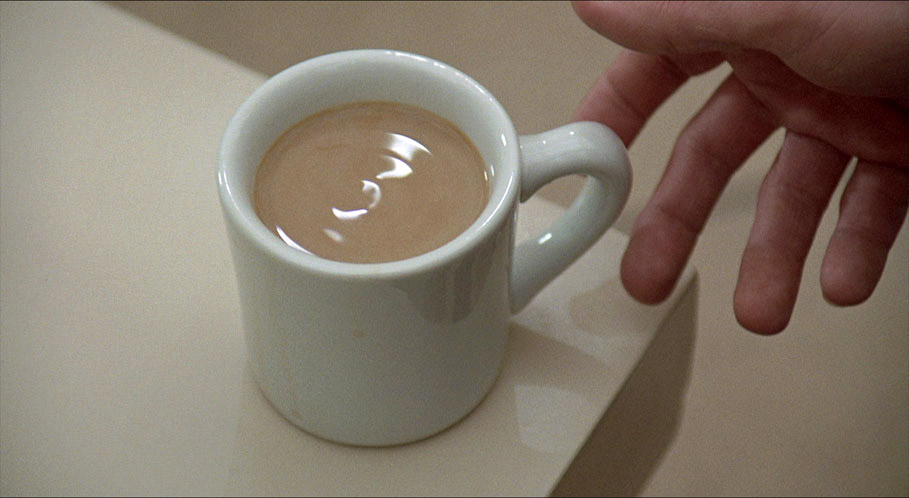
Limited edition exclusive booklet
Aside from the usual cast and credits and disc production credits, there are five meaty pieces on the film.
Accidents Will Happen by Neil Sinyard: Sinyard has some great points to make. Not sure about Fonda's 'tortoise'. Think Teenage Mutant Ninja. But then I only have Fonda's word for it that it was a turtle. On deeper reflection, I think Neil got it right. My bad. Turtles, water, tortoises, land. Never say our reviews are not informative. This is a terrific article with an insight about circles clearly my favourite take away.
The Rejected Score by Gergely Hubai: An informative short essay on why the Michael Small score was rejected. Respect to Mr. Small but I'm damn glad it was rejected.
Nuclear Fallout: The China Syndrome and the Press: More noteworthy quotes about the film from the time it was released. Interesting to see another version of 'Why the red hair?' which doesn't tie in with Fonda's own reason in the making of doc. Her husband said he'd never had a relationship with a redhead? Christ. Some great quotes here and especially interesting are those made before the Three Mile Island 'accident'.
Hollywood's Progressive Producer: An Interview with Bruce Gilbert by Barbara Zheutlin and Jim Richardson: Some interesting info in here with a little repetition (which is to be expected) from the making of doc.
Critical Reaction: This features extracts from some reviews and all are insightful and entertaining.
I'm assuming the young man on the back cover is James Bridges. He looks a lot younger than 42. I can't imagine who else it may be. Just Googled it. That's the man but well before he brilliantly directed The China Syndrome.
This is a cracking disc with decent, relevant extras. The China Syndrome is a top-notch thriller with the added bonus of having so much at stake given the nuclear energy background. Performances across the board are excellent, special effects believable and the paranoia is rampant. It's an appropriate addition to the politically aware thrillers of the 70s and it's in great company (The Parallax View, Three Days of the Condor and All The President's Men) and stands as a terrific example of what Hollywood could do to raise awareness of an important issue, even when it didn't care to. Well recommended.
|